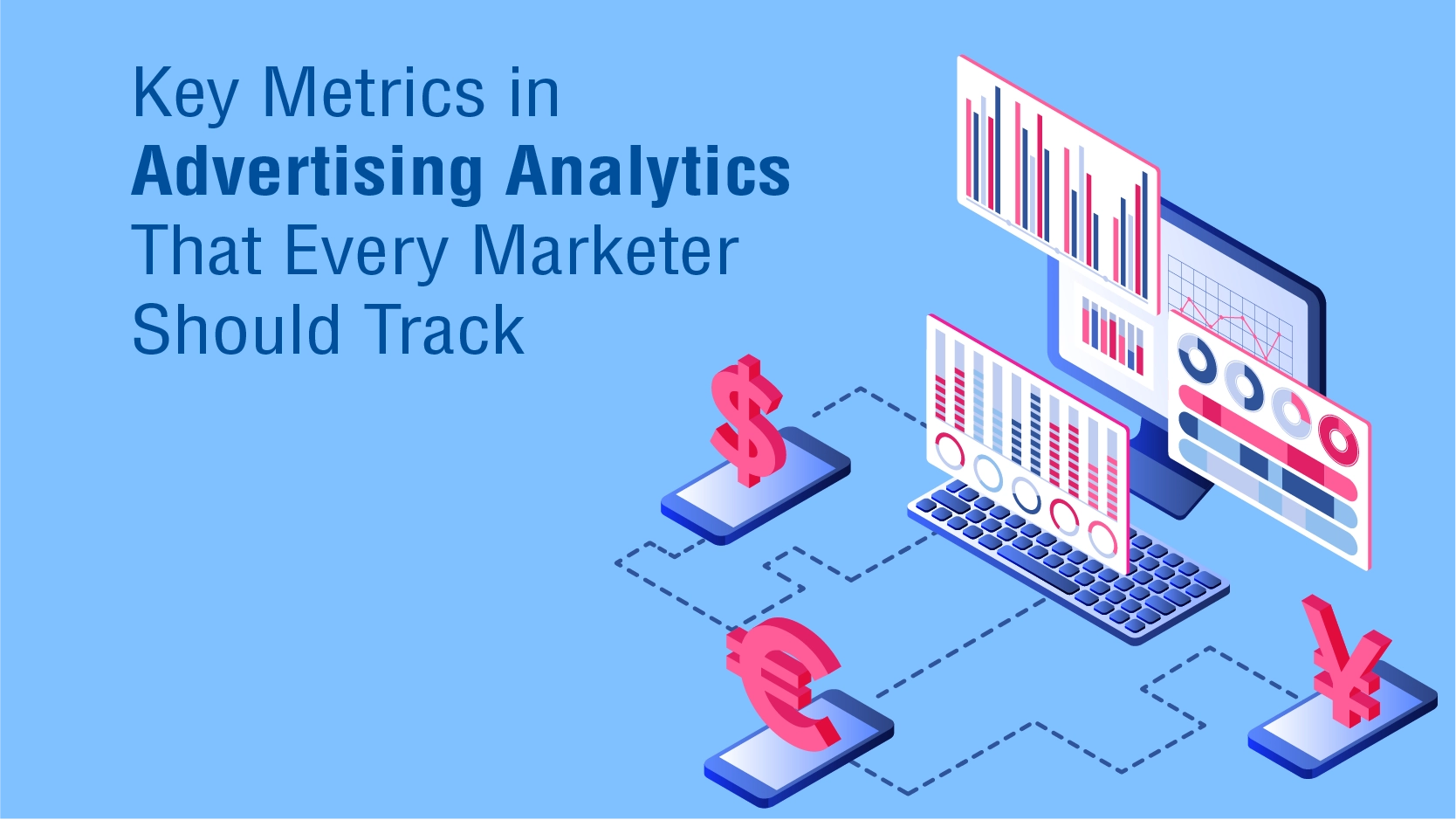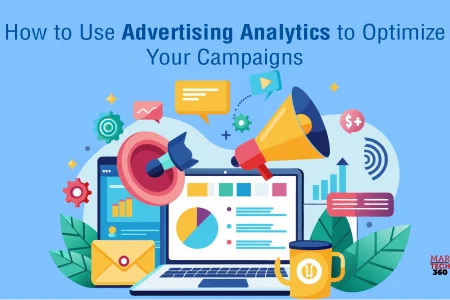Customer interactions are what determine a brand’s success in the present digital era. For marketers, it has grown to be a significant obstacle. Despite its quick expansion, the ecosystem’s operators are poorly targeted and monitored, and there are lost revenues and budgets all around it. This is where advertising analytics come into play, giving companies an effective means of tracking, evaluating, and refining their marketing initiatives.
Analysis reveals that some of the overall advertising budget doesn’t yield productive results. Advertisers may ensure a higher return on investment and reduce revenue leakage for their campaigns by evaluating budget allocations at every stage of the process. Let’s learn how advertising analytics helps track various campaigns across multiple channels.
What is advertising analytics?
Advertising analytics is the technique of measuring a company’s advertisement effectiveness through digital tools. Many marketing channels are used by businesses as alternative means of reaching a target consumer base. Advertisements on social media that are paid for are examples of common marketing platforms. Large volumes of user data can be generated by using many marketing channels, and this data can provide insightful knowledge about the purchasing behaviors of customers.
Marketing experts may discover which channels and ads effectively entice customers to interact with the business by employing advertising analytics tools. They can then utilize this knowledge to enhance their advertising approach.
Key Metrics in Advertising Analytics That Every Marketer Should Track

B2B Advertising Metrics
Lead Conversion Rate: It measures the proportion of users that click on an advertisement and then complete a desired action (like buying something or subscribing to a newsletter). It is essential for determining how well advertising strategies influence particular results.
Cost Per Lead (CPL): It denotes the price of producing a lead that expresses interest in a good or service. For initiatives aimed at generating leads, lead cost is essential as it aids in determining how cost-effective these efforts are.
Return on Investment (ROI): This metric assesses the profitability of advertising campaigns by comparing the revenue generated against the costs incurred. A positive ROI indicates effective advertising strategies.
Impressions and Click-Through Rate (CTR): These metrics monitor the frequency with which advertisements are shown (impressions) and the proportion of viewers who click on them (CTR). They offer information on how visible and engaging B2B advertisements are at first.
Impressions are commonly employed for monitoring digital advertising campaigns on social networking sites like Facebook, Instagram, YouTube, and TikTok, as well as search engines like Google and Bing.
B2C Advertising Metrics
Conversion Rate: This metric shows what proportion of users finish a desired activity after interacting with an advertisement on a website, like making a purchase. It is an important measure of how well advertising boosts sales.
Customer Lifetime Value (CLV): This measure is essential for determining how marketing initiatives will affect the long run. It is an indication of the overall amount of money a client brings in during their time working with you. You may optimize marketing tactics and manage resources more efficiently by concentrating on CLV and making data-driven decisions.
Customer Acquisition Cost (CAC): The entire cost of bringing in a new client as a result of advertising is determined by this metric. It aids B2C businesses in comprehending the effectiveness of their advertising campaigns and financial spending.
Return on Ad Spend (ROAS): It indicates a figure of how much money is made for each dollar spent on advertisements. A more successful ad campaign is indicated by a higher ROAS.
Engagement Metrics: Metrics like likes, shares, and comments on social media advertisements are crucial for measuring audience engagement and brand involvement in B2C advertising.
Website Traffic: For B2C businesses, tracking the number of visitors to a website as a result of advertising campaigns is essential. It assists in determining how well advertisements work to draw in new visitors to the website. However, the most successful B2C marketers view website traffic as more significant than sales, according to MarketingProfs’ B2C Content Marketing research, despite the fact that sales placed top overall on the metric importance list.
Also Read: Top 5 free marketing analytics platform for campaign optimization
Must-Have Advertising Metric Tools/Platforms
According to Netskope’s 2019 Cloud Report, the average enterprise’s score is 120, and it continues to improve annually.
Tools for monitoring advertising metrics are crucial for assessing how well advertising campaigns are performing across a range of media. Key metrics like clicks, conversions, and return on investment (ROI) are all shown by these tools. These are some noteworthy platforms and solutions for advertising metrics that you may want to take into account.
1. Google Analytics
You may utilize Google Analytics‘ extensive feature set and analytics reports to analyze your campaigns more thoroughly and enhance your entire online advertising efforts. User information gathered from Google advertising cookies is used by Google Analytics.
2. Adobe Advertising Cloud
An end-to-end advertising platform is Adobe Advertising Cloud. It is a good fit for display marketers seeking cross-channel and cross-screen integrations, particularly for social media, radio, and TV funnels. The excellent functional capabilities of Adobe Advertising Cloud make online campaign administration simple and efficient.
Ads with a better interaction rate on websites and social media can be created and distributed with Adobe Advertising Cloud’s extremely precise funnel tracking.
3. Facebook for Business
Facebook for Business is an excellent Ad Tech tool for any marketer aiming to target certain customers with custom ad design and ad targeting in order to boost sales and brand exposure. By providing you with aggregated data on Facebook users, it makes it simple to locate more others who share your interests. These filters are used by advertisers to customize their content so that it appeals to the target market.
4. Coupler.io
Coupler.io is a no-code platform for reporting and data analysis. Its goal is to assist professionals in transforming their unprocessed data into insightful reports. With the help of this solution, spreadsheets and data visualization programs can automatically import data from marketing, sales, finance, and other sources. Marketers may use Coupler.io to build live dashboards for real-time analysis of ad performance on a variety of platforms, including Instagram and Google Ads.
5. Marin Software
Marin Software provides a platform for managing ad campaigns across multiple channels. It has several connectors and features. Advertisers on various platforms can use Marin software to aggregate purchase data. It helps them retarget their most valuable clients on e-commerce sites like Amazon, eBay, Alibaba, Google, and Facebook. Three apps are included in the system to handle display, social media, and search marketing. By merging data from various sources, advertisers can create accurate audience segments. They can then retarget those segments across channels and devices.
6. Verizon Media Ad Platform
Verizon Media, the media branch of Verizon Communications, offers Ad Tech solutions, including native ad marketplaces, SSPs, DSPs, and Verizon Media Exchanges, to publishers and advertisers. Through premium TV networks, streaming services, and unique inventory from their out-of-home (OOH) businesses, Verizon Media Ad Platform enables advertisers to interact with customers.
7. Criteo Dynamic Retargeting
Criteo Dynamic Retargeting shows relevant advertisements at crucial points in a customer’s journey. According to the vendor, Criteo Dynamic Retargeting boosts the effectiveness of each campaign by using machine learning to provide the most relevant advertising. You can compare specific device performance with the analytics modules available on the Criteo platform.
8. AdRoll
When it comes to retargeting viewers who haven’t yet converted into leads or sales, AdRoll is an excellent advertising tool. Smart marketers must use these technologies to engage prospects after investing in digital ads that direct them to sales sites.
9. HubSpot
In addition to tracking campaign performance, lead generation, and ROI, HubSpot, which is well-known for its inbound marketing skills, provides advertising solutions that easily integrate with additional advertising efforts.
Bottom Line
The optimization of advertising expenditure, informed decision-making, and enhanced campaign performance are all dependent on the insights gleaned by advertising analytics. Digital advertising analytics, encompassing basic metrics such as click-through rates and conversion rates as well as more complex measurements like lifetime value and share of voice, offer a comprehensive view of marketing efficacy. To effectively navigate this complexity and achieve desired outcomes, marketers must have the appropriate tools at their disposal.

